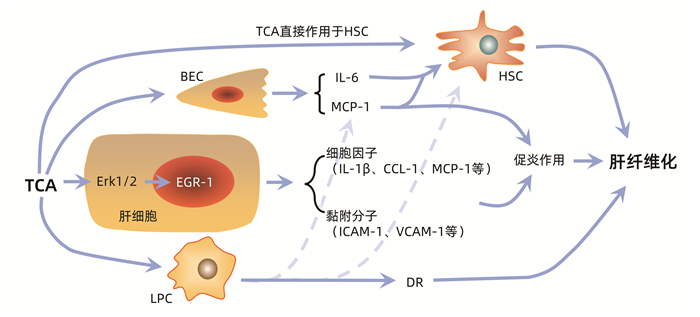内蒙古自治区蒙古族聚集区丁型肝炎流行现状分析
DOI: 10.3969/j.issn.1001-5256.2023.05.012
Epidemiological situation of hepatitis D in the gathering area of Mongolian population in Inner Mongolia Autonomous Region of China
-
摘要:
目的 探讨内蒙古自治区蒙古族聚集区丁型肝炎病毒(HDV)感染情况以及分子流行病学特点。 方法 纳入2019年4月—2020年10月在国际蒙医医院就诊的乙型肝炎表面抗原(HBsAg)阳性的患者230例,根据患者情况分为乙型肝炎合并肝硬化组(n=18)和乙型肝炎组(n=212);并以HBsAg定量值250 IU/mL为界限将患者分为HBsAg<250 IU/mL组(n=104)和HBsAg≥250 IU/mL组(n=126)。采用ELISA方法进行HDV抗体的检测,抗体阳性者进一步利用实时定量PCR方法进行HDV RNA检测。并对HDV RNA阳性标本进行分型检测。计数资料两组间比较采用χ2检验。 结果 HDV抗体检测阳性率为16.09%,抗体阳性患者中HDV RNA阳性率为91.89%。乙型肝炎合并肝硬化患者共18例,HDV抗体检测阳性率为44.44%,抗体阳性患者HDV RNA阳性率为100%。HBsAg<250 IU/mL的患者共104例,其中只有3例(2.88%)HDV抗体阳性。而HBsAg≥250 IU/mL的患者共126例,HDV抗体阳性率为26.98%。所有能测出分型的标本的基因分型均为1型。 结论 内蒙古自治区蒙古族聚集区HDV感染率较高,尤其是HBsAg≥250 IU/mL及肝硬化患者。需加强HBsAg阳性患者的丁型肝炎检测,及早诊断和治疗,防止肝炎进一步发展。 Abstract:Objective To investigate the status and molecular epidemiology of hepatitis D virus (HDV) infection in the gathering area of Mongolian population in Inner Mongolia Autonomous Region of China. Methods A total of 230 patients with positive hepatitis B surface antigen (HBsAg) who attended Inner Mongolia International Mongolian Hospital from April 2019 to October 2020 were enrolled, and according to related information, they were divided into hepatitis B+liver cirrhosis group(n=18) and hepatitis B group(n=212). According to HBsAg quantification with a cut-off value of 250 IU/mL, the patients were divided into HBsAg < 250 IU/mL group(n=104) and HBsAg ≥250 IU/mL group(n=126). ELISA was used to detect HDV antibody, and quantitative real-time PCR was used to measure HDV RNA in patients with positive HDV antibody. Genotyping was performed for HDV RNA-positive samples. The chi-square test was used for comparison of categorical data between two groups. Results The positive rate of HDV antibody was 16.09%, and among the patients with positive HDV antibody, the positive rate of HDV RNA was 91.89%. Among the 18 patients with hepatitis B and liver cirrhosis, the positive rate of HDV antibody was 44.44%, and among the patients with positive HDV antibody, the positive rate of HDV RNA was 100%. There were 104 patients with HBsAg < 250 IU/mL, among whom only 3 patients (2.88%) were positive for hepatitis D antibody, and there were 126 patients with HBsAg ≥250 IU/mL, with a positive rate of HDV antibody of 26.98%. Genotype 1 was observed in all the samples that could be genotyped. Conclusion There is a relatively high infection rate of HDV in Inner Mongolia Autonomous Region, especially in patients with HBsAg ≥250 IU/mL or those with liver cirrhosis. It is necessary to strengthen the detection of hepatitis D in HBsAg-positive patients and perform early diagnosis and treatment to prevent the further progression of hepatitis. -
Key words:
- Hepatitis D /
- Hepatitis Delta Virus /
- Hepatitis B /
- Epidemiologic Studies
-
肝硬化是慢性肝损伤的终末阶段,其特点是肝细胞反复慢性变性坏死,继之纤维组织增生和肝细胞结节状再生,使肝脏正常小叶结构破坏和血液循环途径发生改变[1-2]。胆汁淤积是肝硬化病理表现,肝硬化产生的纤维间隔可压迫肝内胆管树,进一步加重胆汁淤积。而在非肝硬化的胆汁淤积患者中,胆汁在肝内积聚,高水平的胆汁酸损伤胆管上皮,胆道压力升高导致胆管破裂,使肝细胞暴露于高水平胆汁酸,随着时间的推移也会发展为肝硬化,最终导致肝衰竭。胆汁淤积与肝硬化互为因果形成恶性循环,在此过程中牛磺胆酸(taurocholic acid,TCA)的水平升高显著[3]。根据国内外现有研究,这些水平异常的TCA可以作用于不同种类的肝细胞从而加速肝硬化进展,具有成为肝硬化临床治疗靶点的潜力。
1. TCA与胆汁淤积性肝硬化严重程度呈正相关
TCA属于初级结合型胆汁酸,在胆汁中主要以胆盐的形式存在。人类肝脏胆汁酸的合成90%通过经典合成途径(图 1),仅10%通过替代合成途径合成[4]。在肝病中,胆固醇7α羟化酶活性降低,替代合成途径的占比升高。但替代合成途径只生成鹅脱氧胆酸,因此即使在肝硬化条件下,TCA也只通过经典合成途径合成[5-6]。
 图 1 TCA的合成示意图注:C1,7α-羟基-4-胆甾烯-3-酮;C2,7α,12α-羟基-4-胆甾烯-3-酮;C3,5β-胆甾烷-3α,7α,12α-三醇;CYP7A1,胆固醇7α-羟化酶;HSD3B7,3β-羟基-Δ5-C27-类固醇脱氢酶;CYP8B1,甾醇12α-羟化酶;AKR1D1,Δ4-3-氧类固醇-5β还原酶;AKR1C4,3α-羟基类固醇脱氢酶;CYP27A1,甾醇27-羟化酶;THCA,3α,7α,12α-三羟基胆甾酸;BACS,胆脂酰CoA合成酶;VLCS,超长链脂酰CoA合成酶;AMACR,α-甲基酰基辅酶A消旋酶;DBP,D-双功能蛋白;SCPx,甾醇载体蛋白x;BAAT,氨基酸N-酰基转移酶;ASBT,钠依赖回肠尖端胆汁转运体;NTCP,牛磺胆酸钠转运蛋白;OATP,有机阴离子转运蛋白。
图 1 TCA的合成示意图注:C1,7α-羟基-4-胆甾烯-3-酮;C2,7α,12α-羟基-4-胆甾烯-3-酮;C3,5β-胆甾烷-3α,7α,12α-三醇;CYP7A1,胆固醇7α-羟化酶;HSD3B7,3β-羟基-Δ5-C27-类固醇脱氢酶;CYP8B1,甾醇12α-羟化酶;AKR1D1,Δ4-3-氧类固醇-5β还原酶;AKR1C4,3α-羟基类固醇脱氢酶;CYP27A1,甾醇27-羟化酶;THCA,3α,7α,12α-三羟基胆甾酸;BACS,胆脂酰CoA合成酶;VLCS,超长链脂酰CoA合成酶;AMACR,α-甲基酰基辅酶A消旋酶;DBP,D-双功能蛋白;SCPx,甾醇载体蛋白x;BAAT,氨基酸N-酰基转移酶;ASBT,钠依赖回肠尖端胆汁转运体;NTCP,牛磺胆酸钠转运蛋白;OATP,有机阴离子转运蛋白。肝硬化严重影响患者生存质量,为了准确评估肝损伤程度以及肝硬化预后,现在使用最为广泛的为Child-Pugh(CP)分级标准和终末期肝病模型(MELD),但是CP分级在临床实践中仍然存在缺陷,如CP分级不能提供肝硬化病理阶段的直接证据;其量化指标中存在主观成分,评判还需依赖临床医师的经验等[7-8]。因此需要一个更为客观准确的量化标准来弥补CP评分的不足,以便能更早对肝硬化进行干预。胆汁淤积是肝硬化的突出表现,与非胆汁淤积患者相比,胆汁淤积患者的血清胆汁酸谱发生了巨大的改变,其中以TCA升高最为显著。在非胆汁淤积患者体内,TCA约占总胆汁酸10%,而在胆汁淤积患者体内这一比例升高到34%[3]。TCA、牛磺鹅脱氧胆酸(TCDCA)、甘氨胆酸(GCA)是肝硬化患者血清中升高最多的胆汁酸,且这些胆汁酸与CP评分正相关,使用MELD评分进行验证也得到了同样的结果[9-10]。Horvatits等[11]也发现急性失代偿期肝硬化患者血清中TCA、GCA、TCDCA的水平显著高于代偿期肝硬化患者,并且与肝病严重程度相关。同时生化分析也得出牛磺胆酸盐、甘氨胆酸盐等胆汁酸盐与血小板计数、国际标准化比值、血清白蛋白、C反应蛋白呈显著正相关的结论。表明TCA可作为肝硬化患者分层的潜在标志物,能够辅助现有分级系统更加客观的评价肝硬化患者的肝功能,以实现更早的干预,提高患者生存质量。
2. 胆汁淤积状态下TCA加速肝硬化的机制
2.1 TCA通过肝星状细胞(HSC)加速肝硬化进展
正常肝脏中的HSC位于Disse的内皮下间隙,在生理上负责细胞外基质的合成和重塑,也可以作为肝脏特异性周细胞发挥作用[2]。在肝纤维化的发展过程中,HSC经历了转分化或激活的过程。这个过程的特点是细胞从静止型HSC向激活型HSC转变[2, 12],主要包括形态转化为肌成纤维样细胞、细胞增殖增加、细胞外基质成分的合成改变、生长因子和细胞因子的分泌增加和细胞收缩能力的增强。而TCA可以诱导HSC上述转变从而加速肝硬化进展。
Liu等[10]将LX-2细胞(肝星状细胞系)在TCA的环境下培养,发现TCA能显著促进LX-2细胞的增殖,呈剂量依赖性。经过TCA处理后,LX-2细胞Ⅰ型胶原蛋白和α-平滑肌肌动蛋白(α-SMA)的表达明显增加,也呈剂量依赖。肝纤维化过程中细胞外基质的沉积与Disse间隙中的Ⅳ型胶原被纤维状的Ⅰ型和Ⅲ型胶原取代是肝纤维化的标志性过程[13],α-SMA也是HSC向肌成纤维样细胞转化的标志物,这表明TCA可以直接刺激HSC增殖,诱导其向肌成纤维样细胞转化,释放Ⅰ型胶原,从而促进肝纤维化。
TCA还能促进LX-2细胞Toll样受体(TLR)4的表达,经TCA处理后,TLR4的表达相较于对照组呈剂量依赖增加[10]。TLR是一类高度保守的模式识别受体,参与体内病原体的识别。TLR刺激后产生的强烈促炎症作用以及抗病原反应在短期内有利于机体对抗病原,但是TLR长期或过度激活会对机体产生不利影响[14]。肝硬化患者肠黏膜通透性改变以及肠道细菌易位造成门静脉以及体循环中LPS水平升高,LPS可以通过受体TLR4作用于HSC,增强TGFβ介导的HSC活化和胶原的产生[15]。TGFβ在肝细胞增殖和肝再生、诱导实质细胞凋亡、免疫监视和肝纤维化形成中发挥重要作用[16-17]。肝脏TGFβ主要来源于HSC、Kupffer细胞和肝窦内皮细胞,最近也有证据[18]表明血小板也是TGFβ的重要来源。TGFβ在体内和体外均可激活HSC,TLR4不仅能够促使Kupffer细胞分泌TGFβ,还能下调静止型HSC上的TGFβ假受体Bambi,以增强HSC对TGFβ的敏感性[15]。TLR4诱导的Bambi下调依赖MyD88/NF-κB途径,在实验中MyD88基因缺陷小鼠的肝纤维化程度相较于对照组减轻也证明了这一点[15, 19]。TCA增强了HSC中TLR4的表达,通过依赖于TGFβ的机制激活HSC促进肝硬化进展。而TCA对HSC作用的剂量依赖成为上述TCA水平与肝硬化分期呈正相关临床表现的分子证据。
2.2 TCA通过肝细胞加速肝硬化进展
疏水性胆汁酸在体外可以通过其对脂质的去污作用破坏细胞膜,促进活性氧的生成,导致肝细胞坏死和凋亡[20]。TCA是疏水性胆汁酸的一种,但将肝细胞暴露于高水平TCA后,检测发现肝细胞caspase-3的活性没有增加,培养液中没有检测到ALT,也没有发现与肝细胞凋亡和坏死的相关形态的改变[21]。这些研究表明,TCA并不会直接导致肝细胞的死亡。与之相反的是,将原代小鼠肝细胞暴露于病理水平下的TCA会显著刺激细胞因子(CXCL1、CXCL6、MIP2、MCP-1等)和黏附分子(ICAM1、VCAM-1等) 的表达。而这些细胞因子及黏附分子(包括ICAM-1、MIP2等)参与中性粒细胞在肝脏中的运输,导致肝炎症反应,造成肝损伤[21-23]。同时一些细胞因子(例如CXCL6)还可诱导Kupffer细胞产生TGFβ,通过前述途径直接激活HSC,从而促进肝硬化[24]。上述细胞因子的表达都不同程度依赖于早期生长反应蛋白-1(early growth response protein -1,EGR-1),EGR-1是一种重要的核转录因子,EGR-1依赖的信号可以增强血管和肝脏的炎症[25],其上调依赖细胞外调节蛋白激酶(ERK1/2)信号的激活[24-25]。EGR-1基因敲除小鼠在胆汁淤积过程中炎症反应及肝损伤程度均减低[25]。在实验中也发现TCA能够增加肝细胞EGR-1 mRNA以及蛋白质的表达[21]。综上,病理水平的TCA作为炎症介质能通过ERK1/2途径促进肝细胞EGR-1表达,刺激其产生一系列细胞因子及黏附因子,趋化中性粒细胞进入肝脏实质诱发肝脏炎症,从而促进肝纤维化。
TCA刺激肝细胞分泌的单核细胞趋化蛋白-1(monocyte chemotactic protein-1,MCP-1)不仅是一种招募单核细胞和淋巴细胞的趋化因子,也是体外HSC募集相关的主要趋化因子[26]。循环中的MCP-1与肝硬化的严重程度有关,并且其主要来源于病变的肝脏[27]。在纤维化形成早期,血清MCP-1水平就已经升高,原位杂交证实瘢痕组织生长边缘及再生结节内的肝细胞是MCP-1的主要来源[28]。在体外研究[28]中发现,TCA能够诱导人肝细胞(HepG-2细胞)和原代正常小鼠肝细胞表达MCP-1。在囊性纤维化肝病中,胆汁中MCP-1水平增加与TCA水平呈正相关。同样在胆汁淤积性大鼠中也发现血清和肝脏中MCP-1的表达与TCA呈正相关。Marra等[26]将HSC与MCP-1培养,发现MCP-1能促进HSC迁移,并呈剂量依赖性,而MCP-1对静止型HSC无趋化作用。使用抗MCP-1中和抗体进行干预,MCP-1对HSC的趋化作用被抑制了80%[28]。此外MCP-1作为促炎因子也能直接招募外周血单核细胞到肝脏产生炎症反应从而加速肝硬化[29]。
2.3 TCA通过肝祖细胞加速肝硬化进展
胆管反应(ductular reaction,DR)是指在肝祖细胞介导的肝脏修复过程中形成的局部细胞复合体[30]。这种复合体包括激活的肝祖细胞(liver progenitor cells,LPC)、中间型肝胆细胞和反应胆管细胞,DR被认为与许多慢性肝病的纤维化发生有关,LPC增殖和向胆管细胞分化都是DR的重要特征[31]。在对60例囊性纤维化肝病患儿的肝活检发现,DR与肝纤维化分期和TCA水平显著相关[32]。TCA可刺激LPC增殖,诱导其释放MCP-1和MIP1α,前述已经提到MCP-1对HSC有趋化效应,而MIP1α能通过CCR5募集HSC,并且这些细胞因子还能诱导其他细胞(如炎性细胞)聚集到LPC的利基环境中从而参与肝纤维化[32-33]。TCA还能诱导LPC胆管细胞分化相关基因的表达,促使其向胆管细胞分化,并且这种诱导分化呈时间依赖性[32]。LPC与HSC之间直接的膜接触是肝纤维化的重要一步[33-34],暴露于病理水平TCA的LPC能够分泌趋化因子募集HSC进入其利基环境,导致两者直接接触。HSC膜上表达淋巴毒素-β受体,而LPC膜上表达淋巴毒素-β,两者细胞间的直接接触可以通过淋巴毒素-β受体之间的相互作用导致HSC激活,从而促进肝纤维化[33]。
2.4 TCA通过胆管上皮细胞(bile duct epithelial cells,BEC)促进肝硬化进展
长期胆汁淤积损害毛细胆管,如不能及时修复会逐渐纤维化甚至消失,为了维持体内胆汁代谢相对平衡,肝脏会再生出新的胆管来代偿毛细胆管纤维化,即胆管再生。BEC是胆管的主要构成细胞,能够分泌细胞因子,如MCP-1、IL-6,在促进HSC增殖和胶原合成中起到重要作用。Lamireau等[35]将BEC在不同种胆汁酸的环境下培养,观察胆汁酸对细胞的影响。发现有且仅有在TCA的培养环境下,MCP-1和IL-6的分泌显著增加,MCP-1增加4倍,IL-6增加3倍。
前述已经说明MCP-1作为趋化因子,不仅能够募集中性粒细胞进入肝实质导致炎症反应,而且还对HSC有直接的趋化作用。而IL-6能促进细胞外基质合成,对HSC有促进有丝分裂的作用[36]。肝硬化患者血清IL-6水平升高与病死率有关[37],相较于无肝性脑病患者,患有肝性脑病的患者血清IL-6水平显著增高[38]。向小鼠体内注射IL-6可引发小鼠肝脏炎症和纤维化,还可诱导脂肪细胞胶原合成。因此,IL-6不仅作为肝病及并发症的标志物,其在肝纤维化过程中也发挥重要作用[36]。此外IL-6可以调节培养的肠上皮细胞Clandin-2的表达以此增加肠道通透性,在局部炎症和肠通透性之间建立了明确联系[39]。但是肠道IL-6主要来源于激活的肠巨噬细胞,因此TCA所促进BEC分泌的IL-6能否对肠道屏障产生作用还有待考证。
3. 小结
肝硬化是许多慢性肝病的终末阶段,肝硬化的临床表现之一为胆汁淤积,而长期的胆汁淤积也会促进肝纤维化,两者互为因果。不仅在胆汁淤积性疾病患者中观察到TCA水平大幅升高,在肝硬化患者中也是如此,特别是失代偿期患者血清TCA水平相较于代偿期患者更高,而且TCA水平也与肝病严重程度呈正相关。TCA作为肝硬化患者体内水平显著升高的胆汁酸,其在肝纤维化进程也发挥独特的作用。高水平TCA不仅能直接刺激HSC增殖和分泌,还能促进肝细胞和BEC分泌多种细胞因子及趋化因子激活、募集肝星状细胞,同时TCA可以刺激肝祖细胞诱导胆管反应从而在肝纤维化中起到重要作用(图 2)。上述所涉及的机制均在TCA高水平(≥50 μmol/L)的前提下,而处于低水平的TCA能够维持胆管细胞增殖,在一定程度上对抗肝损伤。例如咖啡酸苯乙酯能增加胆管结扎大鼠胆管细胞凋亡,而TCA能通过增加胆管细胞血管内皮生长因子的表达来减轻这一凋亡作用[40-41],提示降低体内TCA水平可能在肝硬化治疗中起积极作用,表明TCA具有成为肝硬化临床生物标志物以及治疗靶点的潜力,为肝硬化患者的治疗策略提供了新思路。
-
表 1 患者基本信息
Table 1. List of basic patient information
项目 数值 年龄(岁) 46.5±14.2 乙型肝炎合并肝硬化 7.83%(18/230) HDV-IgG(+) 44.44%(8/18) HDV-RNA(+) 100%(8/8) 乙型肝炎 92.17%(212/230) HDV-IgG(+) 13.68%(29/212) HDV RNA(+) 89.66%(26/29) HBsAg<250 IU/mL 45.22%(104/230) HDV-IgG(+) 2.88%(3/104) HDV RNA(+) 33.33%(1/3) HBsAg≥250 IU/mL 54.78%(126/230) HDV-IgG(+) 26.98%(34/126) HDV RNA(+) 97.06%(33/34) 总HDV-IgM(+) 13.91%(32/230) 总HDV-IgG(+) 16.09%(37/230) 总HDV RNA(+) 91.89%(34/37) 基因分型 Ⅰ型 79.41%(27/34) 未分型 20.59%(7/34) -
[1] RIZZETTO M, CANESE MG, ARICÒ S, et al. Immunofluorescence detection of new antigen-antibody system (delta/anti-delta) associated to hepatitis B virus in liver and in serum of HBsAg carriers[J]. Gut, 1977, 18(12): 997-1003. DOI: 10.1136/gut.18.12.997. [2] ZHANG Z, URBAN S. New insights into HDV persistence: The role of interferon response and implications for upcoming novel therapies[J]. J Hepatol, 2021, 74(3): 686-699. DOI: 10.1016/j.jhep.2020.11.032. [3] STOCKDALE AJ, KREUELS B, HENRION MYR, et al. The global prevalence of hepatitis D virus infection: Systematic review and meta-analysis[J]. J Hepatol, 2020, 73(3): 523-532. DOI: 10.1016/j.jhep.2020.04.008. [4] SHEN DT, GOYAL H, XU HG. Differences in delta virus hepatitis diagnosis methods and its effect on the hepatitis D prevalence[J]. Gut, 2020, 69(10): 1893. DOI: 10.1136/gutjnl-2019-320159. [5] BUTI M, STEPANOVA M, PALOM A, et al. Chronic hepatitis D associated with worse patient-reported outcomes than chronic hepatitis B[J]. JHEP Rep, 2021, 3(3): 100280. DOI: 10.1016/j.jhepr.2021.100280. [6] URBAN S, NEUMANN-HAEFELIN C, LAMPERTICO P. Hepatitis D virus in 2021: Virology, immunology and new treatment approaches for a difficult-to-treat disease[J]. Gut, 2021, 70(9): 1782-1794. DOI: 10.1136/gutjnl-2020-323888. [7] MENTHA N, CLÉMENT S, NEGRO F, et al. A review on hepatitis D: From virology to new therapies[J]. J Adv Res, 2019, 17: 3-15. DOI: 10.1016/j.jare.2019.03.009. [8] KOH C, HELLER T, GLENN JS. Pathogenesis of and new therapies for hepatitis D[J]. Gastroenterology, 2019, 156(2): 461-476. e1. DOI: 10.1053/j.gastro.2018.09.058. [9] ARAGONA M, MACAGNO S, CAREDDA F, et al. Serological response to the hepatitis delta virus in hepatitis D[J]. Lancet, 1987, 1(8531): 478-480. DOI: 10.1016/s0140-6736(87)92090-3. [10] NOUREDDIN M, GISH R. Hepatitis delta: Epidemiology, diagnosis and management 36 years after discovery[J]. Curr Gastroenterol Rep, 2014, 16(1): 365. DOI: 10.1007/s11894-013-0365-x. [11] CHEN HY, SHEN DT, JI DZ, et al. Prevalence and burden of hepatitis D virus infection in the global population: A systematic review and meta-analysis[J]. Gut, 2019, 68(3): 512-521. DOI: 10.1136/gutjnl-2018-316601. [12] ROGGENBACH I, CHI XM, LEMPP FA, et al. HDV seroprevalence in HBsAg-positive patients in China occurs in hotspots and is not associated with HCV mono-infection[J]. Viruses, 2021, 13(9): 1799. DOI: 10.3390/v13091799. [13] CHEN XH, OIDOVSAMBUU O, LIU P, et al. A novel quantitative microarray antibody capture assay identifies an extremely high hepatitis delta virus prevalence among hepatitis B virus-infected mongolians[J]. Hepatology, 2017, 66(6): 1739-1749. DOI: 10.1002/hep.28957. [14] WU SS, ZHANG Y, TANG YY, et al. Molecular epidemiology and clinical characteristics of hepatitis delta virus (HDV) infected patients with elevated transaminases in Shanghai, China[J]. BMC Infect Dis, 2020, 20(1): 565. DOI: 10.1186/s12879-020-05275-1. [15] CHEMIN I, PUJOL FH, SCHOLTÈS C, et al. Preliminary evidence for hepatitis delta virus exposure in patients who are apparently not infected with hepatitis B virus[J]. Hepatology, 2021, 73(2): 861-864. DOI: 10.1002/hep.31453. 期刊类型引用(8)
1. 王刚,靳茜,郭紫薇,陈玥,叶永安. 基于“脾气散精”理论探讨慢性肝病的中医治疗. 中医药学报. 2024(01): 1-5 .  百度学术
百度学术2. 杨晓旭,李文兰. 甘遂炮制前后对生理状态大鼠肝脏代谢组学研究. 中国医院药学杂志. 2024(03): 274-286 .  百度学术
百度学术3. 王承祥,吕雅璇,孟鹏,刘泽,高彩霞,程雪云,刘静璇,侯爱画. 从“肝体阴而用阳”理论辨治急性肝损伤探析. 中国中医急症. 2024(08): 1369-1372+1381 .  百度学术
百度学术4. 侯梦贞,余芸,黄倩倩,张伦,陶文康,蒋月,王建青. 叶酸对邻苯二甲酸二(2-乙基己基)酯(DEHP)暴露导致小鼠胆汁淤积型肝损伤的保护作用. 临床肝胆病杂志. 2024(10): 2062-2069 .  本站查看
本站查看5. 陈瑜,朱雪萍. 小于胎龄早产儿胆汁淤积症的临床特征及危险因素. 中国当代儿科杂志. 2024(10): 1027-1033 .  百度学术
百度学术6. 畅佳音,孟祥玺,蒋晓磊,庄亚风,张春红,常虹,李旻辉. 基于代谢组学的蒙药疗齿草寒热药性研究. 中草药. 2024(24): 8457-8469 .  百度学术
百度学术7. 张国瑞,金艳梅,尼玛群宗,张晓庆,夏茂林. 基于血液代谢产物的雅江雪牛对西藏高原适应性分析. 黑龙江畜牧兽医. 2024(24): 43-49+137-138 .  百度学术
百度学术8. 孙皓月,许梦洁,吴乐灿,郑恩典,余颖聪. 血清胆汁酸谱在早期非酒精性脂肪性肝病患者中的临床意义. 中国现代医生. 2024(36): 28-33 .  百度学术
百度学术其他类型引用(3)
-




 PDF下载 ( 2140 KB)
PDF下载 ( 2140 KB)

 下载:
下载:


 下载:
下载:
 百度学术
百度学术



